22 Types of Dough with Examples and Their Uses
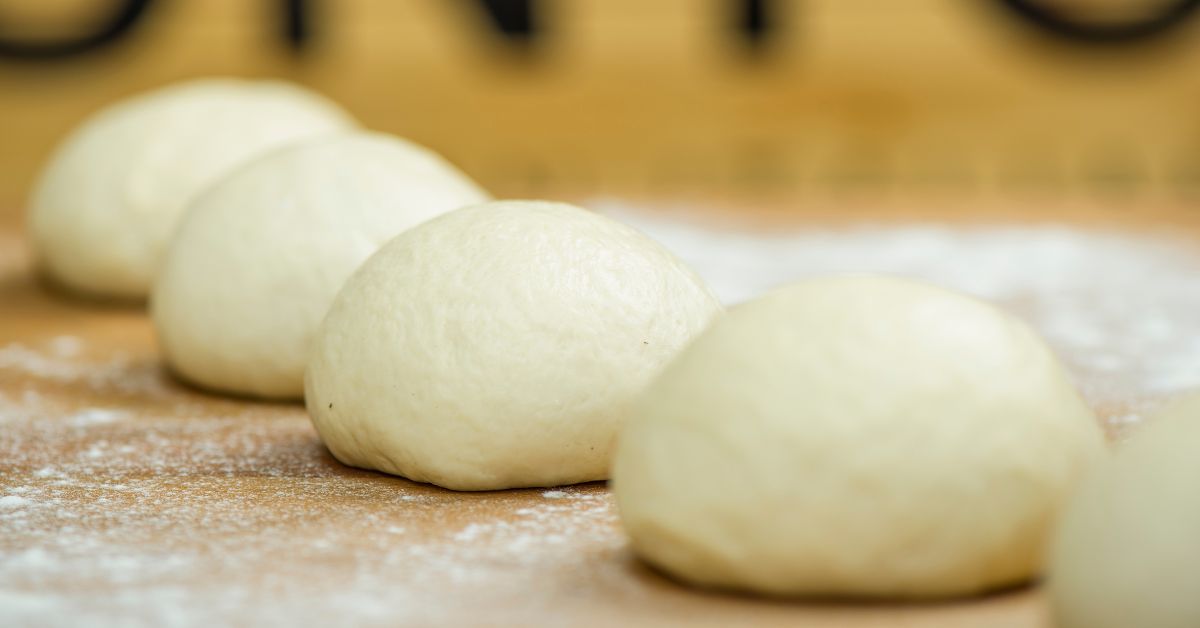
Almost as old as time, the dough is believed to have originated about 30.000 years ago. Its use and varieties have diversified over the years, given its simplicity and wide application. The dough is probably one of the few things that originated so long ago; it is still used and regarded as being irreplaceable. So, how many types of dough are there?
There are about 22 different types of dough. There’s leavened and unleavened, laminated and non-laminated, flaky and mealy, bread and sourdough, rich and pie dough, pate brisee, pate sable, and pate sucree, puff pastry dough, phyllo and choux pastry dough, croissant and brioche dough, Kourou and pasta dough.
The division of dough into different types is based on whether or not there’s a leavening agent, the manner of working with the dough, the level of elasticity and resilience, and the purpose of the dough.
One dough can belong to several categories, it can be leavened, laminated and flaky, for example, and each dough type has its markings and specific purposes. To explain the dough types and how to use them better, in the following paragraphs, I will discuss each dough type and category, how to make it, and how to use it.
Different Types of Dough
Over the years, the many cultures that have come and gone, as well as the ones that stayed, have developed different types of dough and modified the ones that have already existed. So how many types of dough are there, and what are their uses?
Leavened and Unleavened Dough
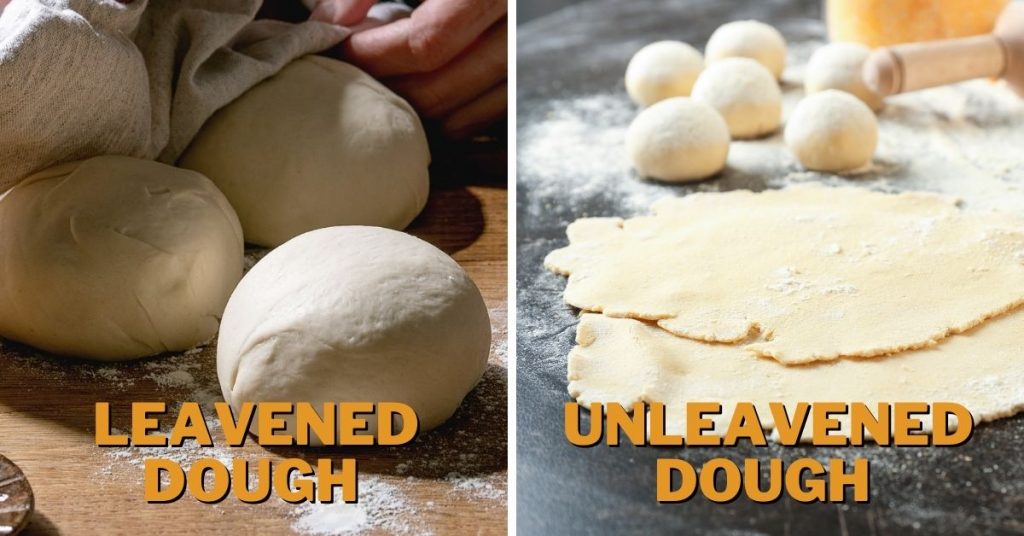
Leavened and unleavened dough are the two main categories of dough. The unleavened dough came before the leavened dough, as it took time to discover the leavening agent.
Unleavened dough found a wide application, and many famous pastries are now made of unleavened dough, such as some types of bread, and tortillas. The unleavened dough is much closer to its original form than the leavened dough.
The ingredients are mainly flour and water, but in time people started adding oil to the mixture, making the bread easier to work with. Therefore, pastries made with unleavened dough are now greasier than pastries made with leavened dough.
Although it originates later than unleavened dough, the leavened dough is still pretty old, as there are several things to use as a leavening agent, so the discovery of the yeast does not coincide with the origin of the leavened dough.
The simplest definition of leavened dough is dough made using a leavening agent. The bacteria from the leavening agent make the dough rise and soften. Therefore a leavening agent could be yogurt, yeast, or soda.
There are chemical, natural, and mechanical leavening agents that produce tiny air bubbles in the dough that change its consistency and make it rise. So, in addition to containing water and flour, the leavened dough also contains a leavening agent.
In some recipes, the flour, water, and leavening agent mixture are kneaded and left to leaven for a certain amount of time; this is called the sponge dough method, where the leavening causes the dough to double in size. This method often includes adding sugar to increase the leavening agent’s effect and salt to help the dough keep its shape.
Another method is the straight dough method, where you don’t leave the dough to leaven but knead the mixture and make the final result straight after. The dough still leavens while you knead and bake it but does not double its size.
The leavened dough has a wider range of applications compared to the unleavened dough. The leavened dough is used for certain types of bread, pies, and filled pastries.
Whereas unleavened dough is mainly used to make a base or a wrapper, the unleavened dough is used to make filling pastries which are a wide range of pastry types.
Laminated and Non-Laminated Dough
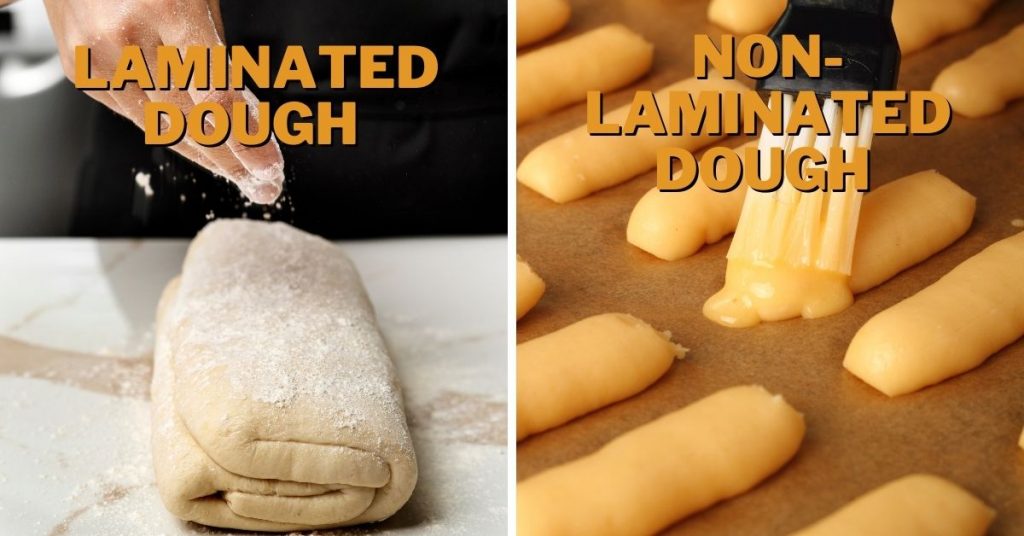
The laminated and non-laminated dough can be leavened or unleavened dough. Whether the dough is laminated or non-laminated depends on the way it has been made.
Laminated dough is kneaded and folded multiple times while creating layers. Each layer is rubbed with a lot of butter, and then it is folded. This type of dough is known to contain large gluten amounts because of the layering, which is when gluten is produced most.
The non-laminated dough is also rubbed with lots of butter, but it isn’t layered, just folded once. Both of these dough types have wide recipe varieties, depending on whether the dough is used for sweet or savory pastries.
The croissant is the most popular laminated dough pastry, and the most famous representative of the non-laminated pastry category is the éclair.
Flaky and Mealy Dough
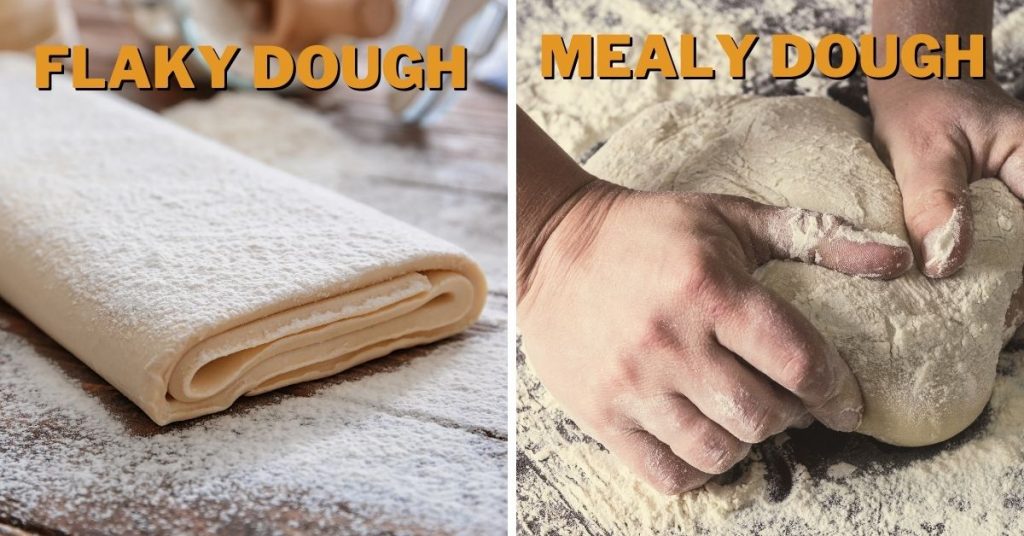
The flaky and mealy dough is a division based on the texture of the dough. The flaky dough is rougher and is mainly used top or bottom crust of pies. It is less elastic compared to the mealy dough, and when baked, it is dry and hard.
The flaky dough is made by mixing flour, butter, and water for a shorter period, whereby the dough becomes lumpy with an uneven butter or fat content. The water hasn’t had the time to get absorbed by the dough, so when you roll it, it is drier than mealy dough and turns harder and crispier when baked, making it the perfect base for a pie filling or an excellent top crust.
Meal dough, on the other hand, is made by mixing water, flour, and butter for a more extended period, producing an even consistency by evenly distributing the butter through the mixture. Because the mixture is being mixed together for a more extended period, the water has a longer time to homogenize with the rest of the ingredients.
As a result, the dough is softer and moister. The meal dough is excellent for custard desserts or as a base for a liquid filling. Since meal dough is highly absorbent, it will take in moisture but won’t get soggy.
Rich and Pie Dough

As the name hints, the rich dough is rich in ingredients, taste, and texture. In addition to flour, water, and leavening agent, the rich dough also contains eggs and some kind of fat, such as butter, cream, or oil.
Though sugar is not necessary to make the rich dough, it often contains a good amount of sugar, and this type of dough is predominantly used for sweet pastries. Its consistency is soft and airy and has a rich and elegant taste.
The pastries made from rich dough are fluffy, airy, and light, and it is the perfect dough to make bread or cake.
Pie dough comes as a leavened or unleavened dough. Although sometimes it can contain the same ingredients as rich dough, pie dough is quite different than rich dough, mainly because of its purpose.
While rich dough can be turned into cake or bread, pie dough is meant to hold a meat or fruit filling, and therefore it needs to be rougher and harder than rich dough. Pie dough often consists of the standard dough ingredients- flour, water, salt, and fat, and unlike rich dough, it rarely contains sugar.
Some recipes call for eggs, vinegar, or soda to be used in the pie dough and different kinds of flavorings. However, these are not necessary to make pie dough.
Bread Dough and Sourdough
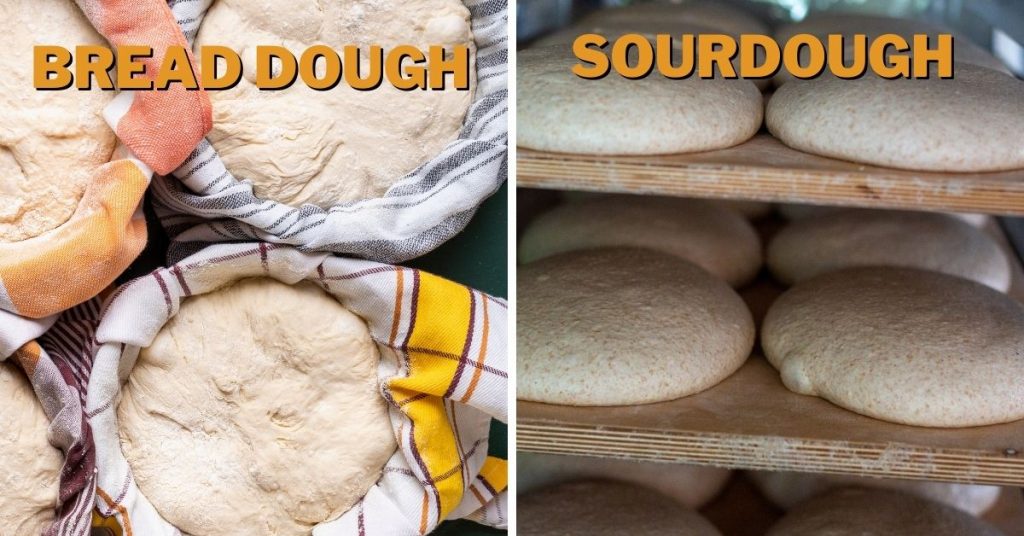
The most common type of dough is the bread dough. Although the name indicates that this type of dough is made to produce bread, there are still other pastries that can be made of it, as it is firm yet elastic and can be used in various ways. For example, you can make pizza crusts out of bread dough.
Bread dough can be made from a single type of flour or a combination of several flour types, yeast, water, and a little oil. It requires a lot of kneading to release gluten and make it soft and elastic. Soda bread dough is a variation of bread dough, where instead of yeast, the dough is leavened using baking soda.
Sourdough is one of the oldest types of leavened bread precisely because it leavens without a leavening agent but a starter culture. Sourdough is believed to have originated in Switzerland and is primarily used for bread-making.
The ingredients needed for sourdough are water, flour, and salt, which are pretty standard, and the starter culture I mentioned above is nothing more than a mix of water and flour. This water and flour mix is left for a day to ferment. When the mix gets bubbly, it is added to the flour and salt mixture, which acts as a leavening agent.
As the name itself tells us, sourdough tastes sour but a little salty, too. It has spongy consistency; it is rich and delicious.
Pate Brisee, Pate Sablee, and Pate Sucree
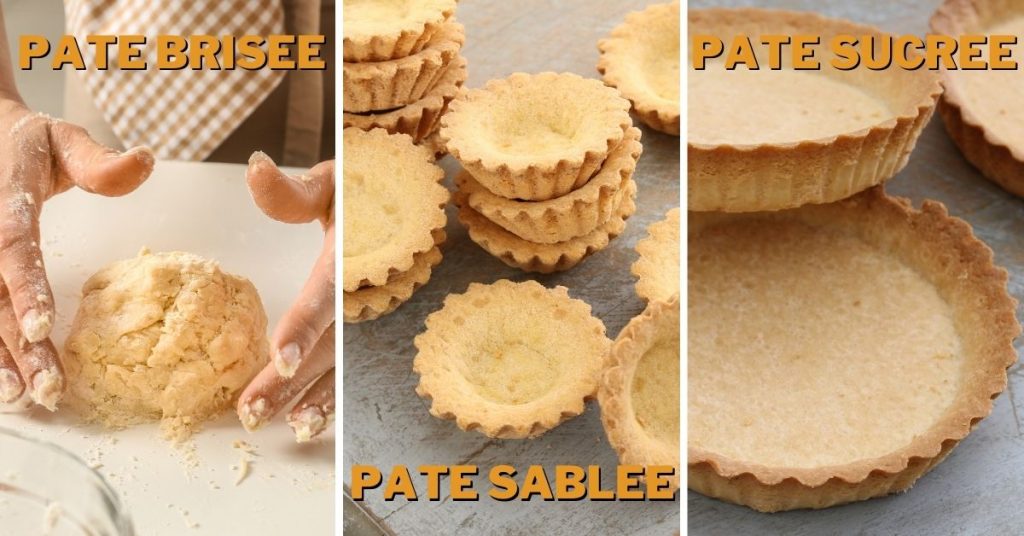
Pate brisee, or “broken dough,” is a type of pie dough made of flour, water, butter, and eggs. This is the most popular pie crust dough and is predominantly used for sweet pastries. Its texture is mealy, meaning it is also a good choice for custard desserts, quiches, and liquid-filling pastries.
Another use of pate brisee is also for cut-out cookies. Although cut-outs aren’t the primary purpose of this type of dough, the grease contained in it makes it a good choice for cut-out cookies.
Pate sablee, or “sandy dough,” is a type of dough that resembles cookie dough to a great extent. It is indeed sandy and crumbly with a rougher surface. This type of dough can also be used to for cookies containing filling, whereby the dough is baked first to form a shell, and the filling is added later.
Pate sablee is a bit delicate to make. It is made with eggs, fat, flour, and sugar. The fat and sugar are first mixed well until they are homogenized and turned into a cream-like substance. Next go the eggs, and the flour comes last.
The dough itself is very soft and greasy, and it is very cooperative when you work with it. Therefore, it is a good option for cut-outs, as it is easy to shape.
Pate sucree is the most sugary of the three. In terms of ingredients and making, pate sucree most resembles the pate brisee, but with one big difference; part sucree contains much more sugar.
In fact, pate sucree literally means “sugar dough,” and it is used for desserts such as cookies and dessert tarts.
Pate brisee, pate sablee, and pate sucree are all French types of dough and are mainly used for sweet pastries. Although pate brisee and pate sablee can be used for salty-tasting pastries, pate sucree has an exclusive application for dessert pastries due to its substantial sugar content.
Puff Pastry Dough and Phyllo Dough
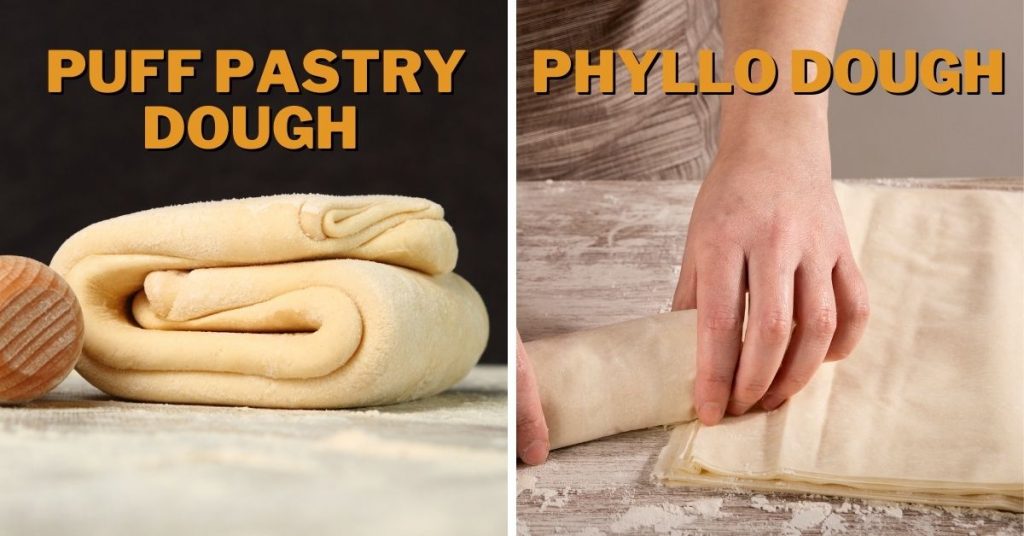
The first thing to know about puff pastry dough is that it is very difficult to make. It is kneaded and folded many times around butter, and not by rubbing the butter on the layers. It is a type of laminated dough which means that it is layered, and it is also called “leaf dough” because the layers are leaf-thin.
It contains flour, water, and a lot of butter. Puff pastry dough is most famous for its use in napoleons but also in savory pastries such as savory tarts.
The making process is somewhat more straightforward than that of puff pastry dough. Similar to puff pastry dough, phyllo dough is very popular in the Middle East and the Balkans. It is a type of unleavened dough made with flour, water, and oil.
The pastries made with puff pastry dough and phyllo dough look similar, whereby the puff pastry dough is greasier because of the large amount of butter. The phyllo pastry is stretched and rolled, while puff pastry is layered.
Baklava (dessert) and Börek (savory pastry) are the most popular pastries made with phyllo dough.
Choux Dough

Choux dough contains butter, eggs, flour, and water. It is a leavened dough but doesn’t use a leavening agent. Instead, the choux dough has a lot of moisture that creates a reaction with the dough, which makes it rise and puff up. Much like the rich dough, choux dough is also a fortified dough.
The pastries made with choux dough have a golden brown color and a crunchy crust. As the moisture evaporates during baking, it leaves the pastry dry, with a chewy middle. The pastry is then somewhat hollow and perfect for filling with cream, jelly, or another creamy filling.
Choux dough is perfect for eclairs, profiteroles, and cream puffs.
This type of dough was invented way back in 1540 by Catharine de Medici’s chef as a way to commemorate her wedding with King Henry II.
Croissant Dough
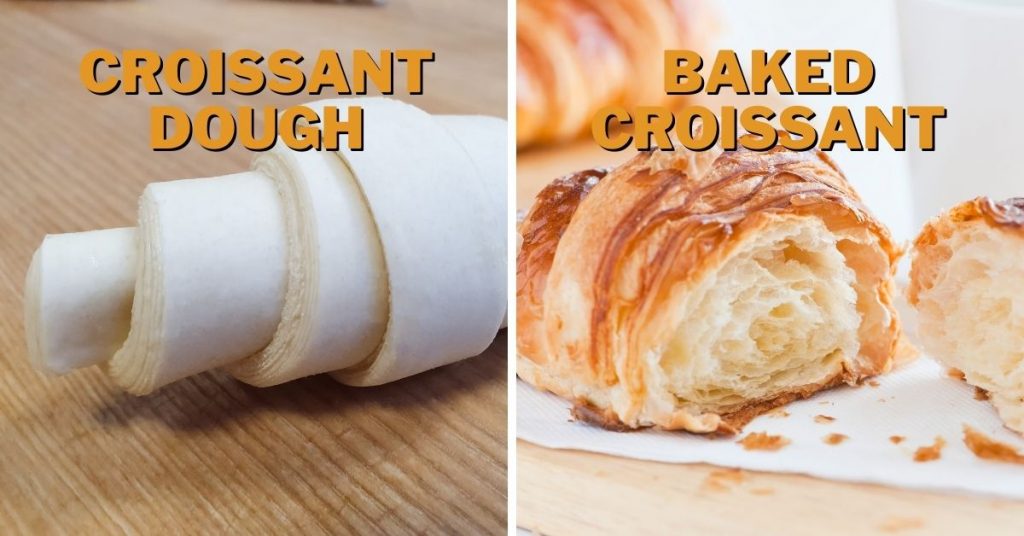
Croissant dough is leavened puff pastry dough. It is also a laminated dough which means that it is layered and contains a lot of butter.
While baking, the layers start to separate, making the pastry puffier and lighter. The final result is a very light, soft, and soft-textured pastry. Even though the croissant dough is used primarily to make croissants, you can also use it for other sweet and savory pastries if the laminating is successful.
Although croissant dough makes light and soft pastries, these pastries are strong enough to sustain filling or topping.
Brioche Dough
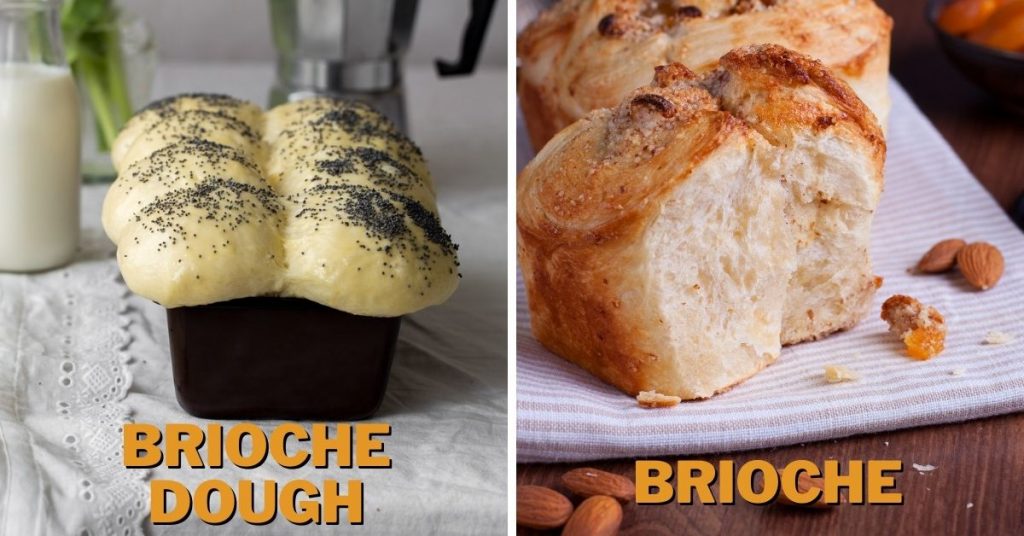
Brioche dough is slightly sweet and rich-tasting dough producing a soft, airy, yet highly satiating bread. Brioche dough is made with flour, water, butter, yeast, and eggs. It needs to leaven and rise, after which it is kneaded again and made into balls which are then shaped into loaves.
There are brioche dough recipes calling for milk and multiple dough risings, making the process last for hours.
The brioche pastries are soft and very rich. They are pretty fatty because of the butter, and if they contain milk, the milkiness is highly expressed.
Although slightly sweet, brioche dough is not a typical dessert dough and brioche bread is a very popular and widely used sandwich bread.
Kourou Dough
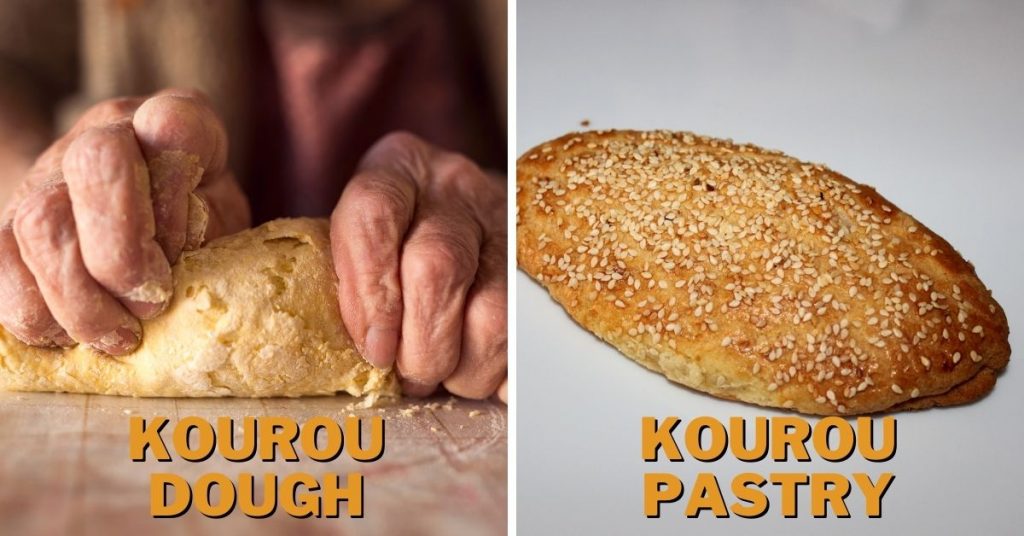
Although dry and crunchy, kourou dough is very rich-tasting. Kourou dough contains flour, water, eggs, milk/yogurt, and butter. Even though it needs butter to be molded, it still needs only a small amount to make that possible.
Kourou dough is great for pies since it is dry enough to support the filling, quiches, and turnover.
Pasta Dough
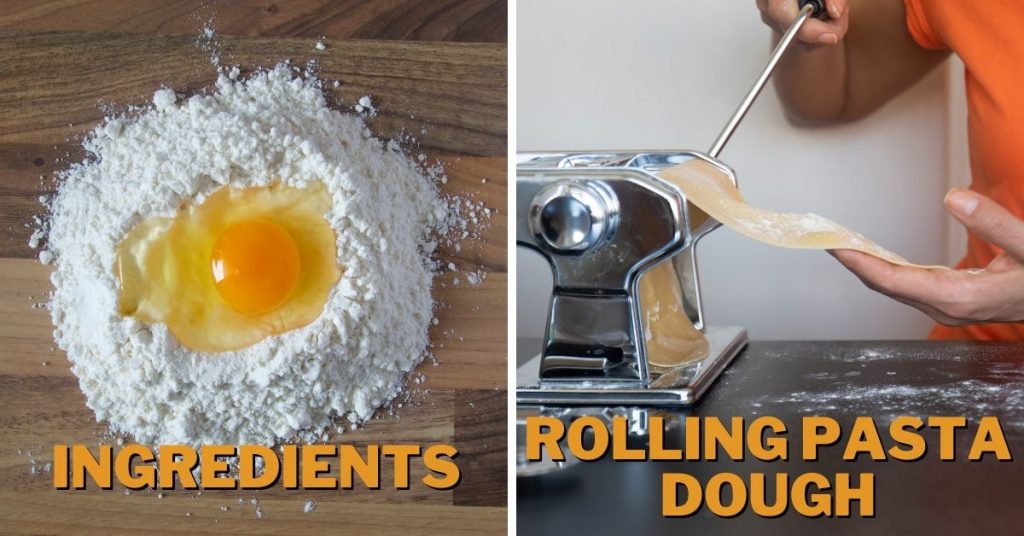
Pasta dough is made of flour, eggs, and salt, and it is an unfermented and unleavened dough. The dough is kneaded until the ingredients homogenize, and then it is rolled into one large and thin piece. The dough is then cut or shaped into the pasta shape you need.
To the untrained eye, it seems a simple-to-make dough, while in fact, it requires some serious skills as the dough can get sticky due to the egg content, so you need to have a good kneading technique and experience.
Tortilla Dough
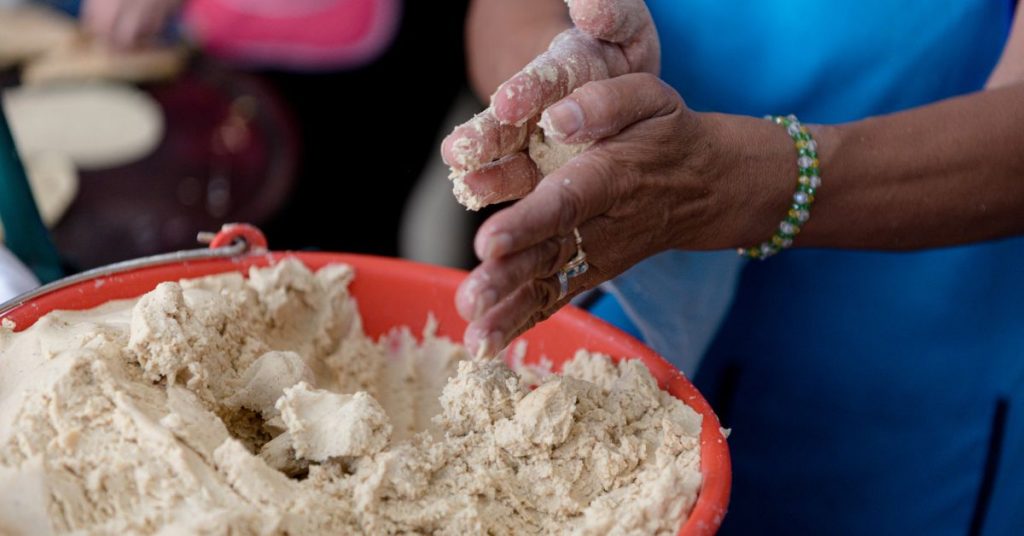
Tortilla dough is a type of unleavened dough made of water, flour, and salt. Unlike the other types of dough, tortilla dough can also come in vegan and non-vegan variants. It is excellent when made only with water and flour, but it is also delicious when made with water, flour, and butter.
The tortilla dough is, basically, flatbread dough. It is elastic and great as a base or wrapping dough.
Pizza Dough
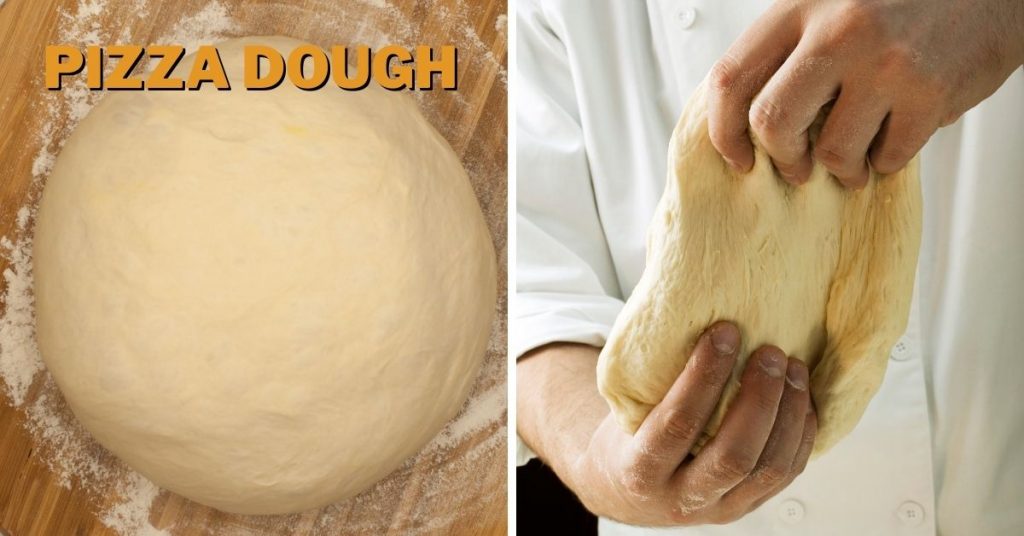
Pizza dough is probably the most used and most popular dough worldwide. Pizza dough can be made with or without yeast, and it is very elastic and very strong, which is to be expected since it is made to support the toppings.
Since the yeast is optional, the other ingredients are water, flour, and a pinch of salt. Pizza dough has many purposes. It is obviously great for pizza but also for filled pastries or even fried ones.
However, pizza dough is more suitable for savory than sweet pastries.
How Many Types of Dough Are There?
To say the exact number of types of dough as each pastry has its own dough. We can categorize dough in terms of leavening agent, so in this regard, there are two types of dough- leavened and unleavened.
If we talk about the texture, there another two types of dough- flaky and mealy. If we view the dough in terms of kneading, there are laminated and non-laminated dough.
These three categories can be mixed and matched, so we have leavened, laminated, and flaky dough, for example.
Another point of view is the pastry the dough is used for, so we have dough named after the pastry, or we can divide the dough into the categories and types as I already did. This list contains 22 different types of dough, divided according to different criteria.
What Is the Difference Between Dough and Batter?
Although, more often than not, batter and dough share many of the ingredients, by no means are they the same. The consistencies of batter and dough are nowhere near. The batter has a thinner and more liquid consistency than dough and needs to be mixed with a spoon and poured with a ladle.
Dough, on the other hand, is far more stable than batter. You can knead the dough with your hands, and it is not meant to be mixed with a spoon. Unlike batter, the dough can be shaped and molded.
The dough is a mixture of flour and liquid-containing ingredients (eggs, milk, yogurt, water), occasionally fat (butter, oil), and optionally a leavening agent.
The batter consists of water, milk, sometimes sparkly water, or cream cheese. However, the batter is always thin and runny. Pancake batter is thicker and more stable, whereas crepe batter is much thinner and runnier.
What Can Be Considered Dough?
The dough can be each mixture containing flour/meal and liquid, whereby the flour/meal content is higher than the liquid content, resulting in a soft but stable mixture. Its consistency has to be stable enough for you to be able to knead it with your hands or to be placed in a bread-making machine.
Either way, the flour and liquid mixture needs to turn into a stable mass that can be further cut, kneaded, shaped, or molded.
